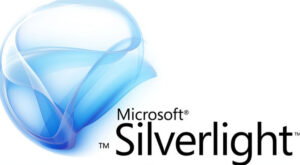
In the realm of web content management systems (CMS), DotNetNuke (DNN) emerged as a significant player in the mid-2000s. DNN, an open-source web application framework and content management system, offered a revolutionary approach to building and managing dynamic websites.
The Birth of DotNetNuke
DotNetNuke was officially launched in December 2002 by its co-founders, Shaun Walker and Joe Brinkman. Initially released as a simple web content management system, DNN quickly evolved to support more complex web applications, portals, and intranet solutions. The platform is built on the Microsoft .NET framework, making it an attractive option for developers already familiar with Microsoft technologies.
Key Features of DotNetNuke:
- Open Source Model: DotNetNuke is open source from the beginning, which meant that developers could access the source code, customize it, and contribute to its ongoing development. This open approach fostered a strong community of users and developers.
- User-Friendly Interface: DNN offered an intuitive, web-based interface for content management, allowing users to create, edit, and publish web content without technical expertise.
- Scalability: The platform’s architecture allowed for easy scaling, making it suitable for small websites, corporate intranets, and large-scale portals.
- Extensibility: DotNetNuke featured a robust module and skinning framework, enabling developers to create custom functionality and design templates.
- Security: The DNN community prioritized security, and the platform included features like user authentication, permissions, and encryption to protect web assets.
DotNetNuke
By 2006, DotNetNuke had already gained substantial recognition and adoption in the web development community. Its success is attributed to several factors:
- Vibrant Community: The DNN community had grown significantly, with a dedicated user base and an active developer community. Users shared knowledge, contributed modules, and participated in forums, enhancing the platform’s capabilities.
- Third-Party Modules: Developers had created a wide array of third-party modules that extended DNN’s functionality. These modules covered e-commerce, forums, social networking, and more, making DNN a versatile platform for various web applications.
- Corporate Adoption: Enterprises were increasingly turning to DotNetNuke as a cost-effective solution for building and managing their web presence. The platform’s extensibility and scalability made it a compelling choice.
- Version Evolution: DotNetNuke continued to evolve with each new version, introducing features that further streamlined content management, improved performance, and enhanced security.
Impact and Legacy
DotNetNuke’s impact on web development and content management cannot be overstated. In 2006, it is a pioneer in the open-source .NET CMS space, offering an accessible and customizable solution for web developers and businesses. Its success paved the way for other open-source CMS platforms that followed.



